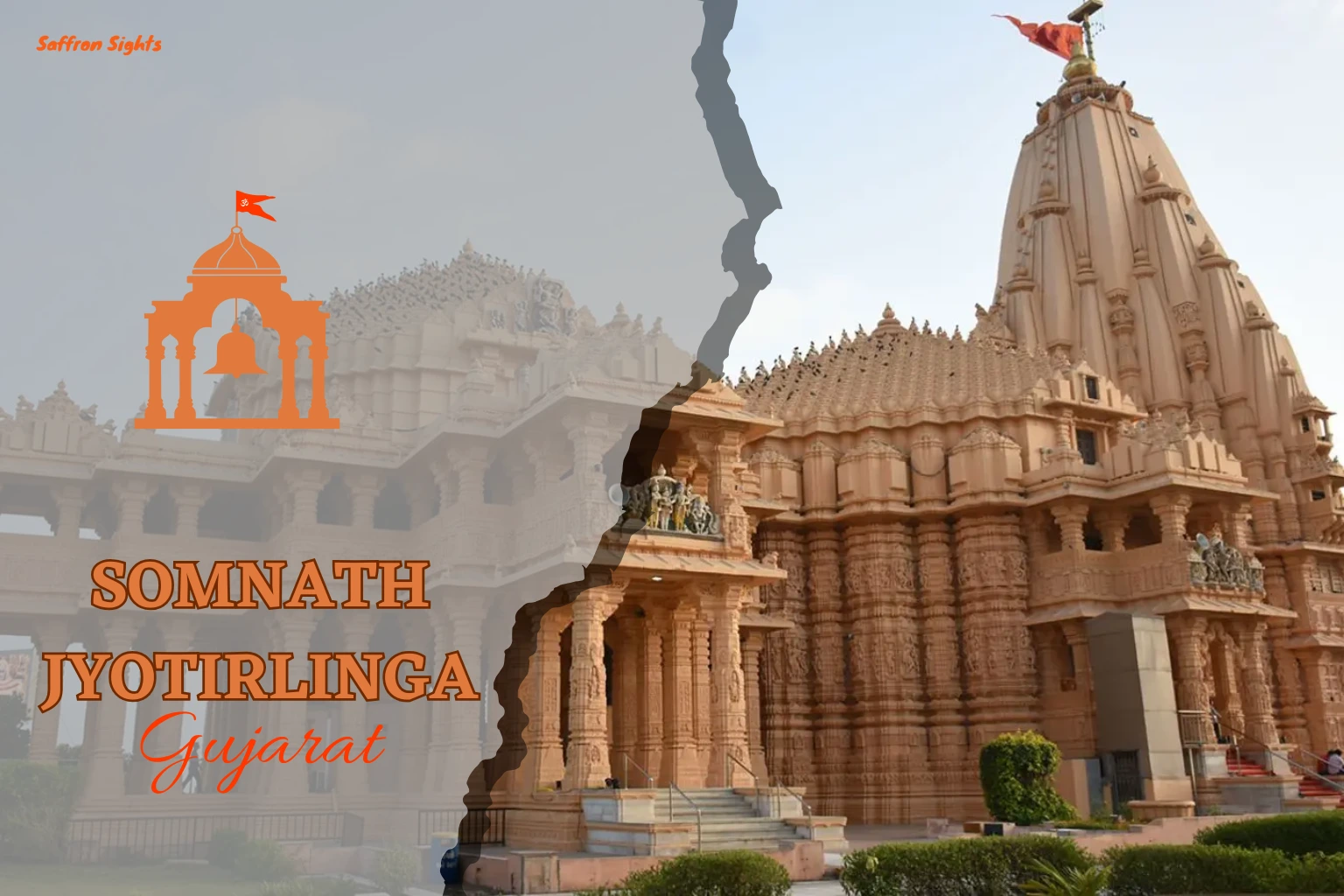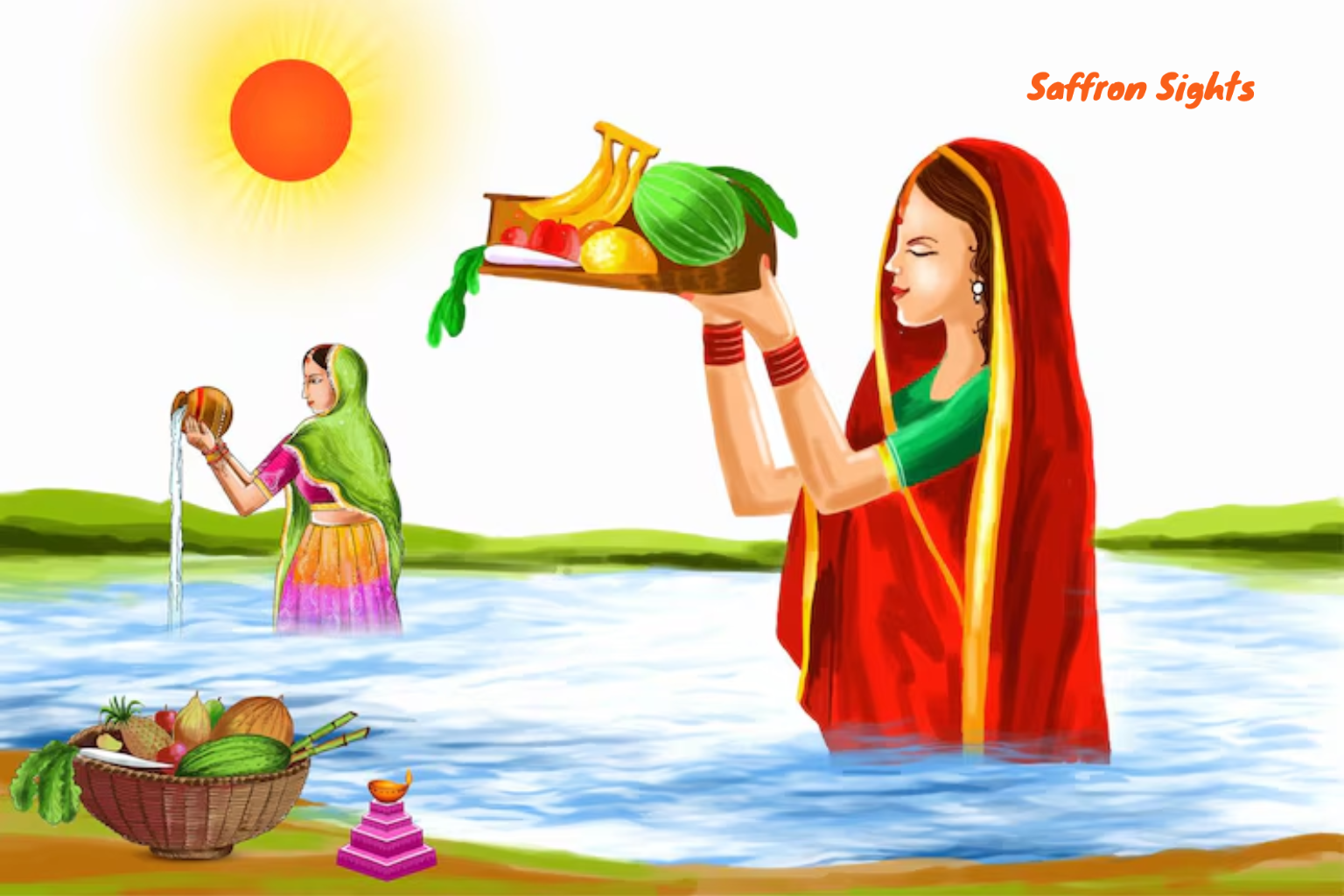Among the twelve sacred Jyotirlingas of Lord Shiva, Somnath Jyotirlinga holds an important place as the first and foremost. This temple, located in Prabhas Patan, Gujarat, has a history that intertwines mythology, faith, and supernatural intervention. It has been demolished and rebuilt multiple times throughout the centuries, yet its spiritual essence has remained unchanged.
However, where did Somnath Jyotirlinga really come from? For what reason did Lord Shiva appear here?

To uncover the answers, we must delve into ancient texts that narrate this mysterious tale, such as the Shiva Purana, Skanda Purana, and other Vedic scriptures.
The Curse of Daksha: How the Story Began
The story of Somnath Jyotirlinga begins with Daksha Prajapati, who was one of Lord Brahma’s sons and an important ruler among the Saptarishis. Daksha had twenty-seven daughters, who were collectively known as Nakshatras (lunar constellations). He gave them in marriage to Chandra Dev (Moon God), expecting them to be treated with equal love and care.
However, Chandra was deeply enchanted by Rohini, his most beloved wife, and neglected the others. The remaining twenty-six wives, feeling dejected and humiliated, complained to their father, Daksha.
Also Read: https://saffronsight.com/nageshvara-jyotirlinga-dwarka/
Daksha’s Wrath and the Curse:
- Upon hearing the grievances of his daughters, Daksha was enraged.
- He warned Chandra to treat all his wives equally, but Chandra ignored his plea.
- In a fit of divine anger, Daksha cursed Chandra to lose his brilliance, beauty, and vitality.
- As a result, Chandra began to wither away, losing his radiance day by day.
- The world plunged into darkness, and natural cycles were disrupted.
Seeing this, the Devas (celestial gods), sages, and even Brahma himself grew concerned. They advised Chandra to seek Lord Shiva’s refuge, as only the supreme Mahadev had the power to reverse the curse.
Chandra’s Penance and Lord Shiva’s Boon
Helpless and desperate to restore his lost glory, Chandra embarked on a severe penance at Prabhas Kshetra (modern-day Somnath). He performed rigorous tapasya (austerities), reciting the powerful Mahamrityunjaya Mantra and offering prayers to Lord Shiva.
After six months of unwavering devotion, Lord Shiva, pleased with Chandra’s penance, appeared before him. Chandra bowed before Mahadev and pleaded for relief from the curse.
Shiva’s Divine Blessing:
- While Shiva could not completely undo Daksha’s curse, he offered a cosmic solution.
- Chandra was granted a cyclical phase of waxing and waning—a divine rhythm that governs the lunar cycle even today.
- He declared that Chandra would regain his brilliance for 15 days (Shukla Paksha) and gradually fade away for the next 15 days (Krishna Paksha).
- This established the lunar phases, which are crucial for Hindu festivals, astrology, and rituals.
To honor Chandra’s devotion, Lord Shiva manifested himself as the Somnath Jyotirlinga, signifying the eternal cosmic cycle of rebirth and renewal.
Why is it Called “Somnath”?
The name Somnath comes from two Sanskrit words:
- “Soma” meaning Moon (Chandra)
- “Nath” meaning Lord or Protector
Thus, Somnath means “Lord of the Moon”, a title bestowed upon Shiva as he rescued Chandra from eternal decay.
References in Sacred Texts
Several Hindu scriptures glorify Somnath Jyotirlinga and its significance:
Shiva Purana (Rudra Samhita, Chapter 14)
- It narrates how Somnath Jyotirlinga was the first Jyotirlinga to manifest, marking it as Adi Jyotirlinga.
- A verse from Shiva Purana states:
“Saurāṣṭre Somanāthaṃ ca śrīśailaṃ Mallikārjunam | Ujjayinyāṃ Mahākālam Oṅkāraṃ Amareśvaram ||”
This verse lists Somnath as the first of the twelve Jyotirlingas.
Skanda Purana (Maheshwara Khanda, Chapter 83)
- It describes the grandeur of Somnath temple and how worshipping here grants liberation from all sins.
- The Skanda Purana states that a single visit to Somnath washes away all karmic debts.
Spiritual and Astrological Significance of Somnath
- Somnath is believed to be the epicenter of cosmic energy, making it a site of immense spiritual power.
- The waxing and waning of the moon, which governs human emotions, tides, and agricultural cycles, is linked to Shiva’s blessing at this site.
- Worshipping at Somnath removes ailments, misfortunes, and planetary doshas (astrological afflictions).
Interesting Facts About Somnath Jyotirlinga
- First among the 12 Jyotirlingas – Somnath is revered as the Adi Jyotirlinga, meaning the first pillar of divine light.
- Rebuilt multiple times – It was destroyed six times by invaders but was gloriously restored each time.
- Magnetic Shiva Lingam – The Somnath lingam was believed to have been a floating lingam, held up by magnetic forces.
- Connection with Krishna – The Prabhas Kshetra is also where Lord Krishna left his mortal body and attained moksha.
- Sunrise Alignment – The temple is designed so that sunlight falls directly on the Jyotirlinga at dawn.
Sacred Rituals and Worship at Somnath
- Maha Rudrabhishek – A sacred anointment ritual with milk, honey, and holy water.
- Panchamrit Abhishek – The Lingam is bathed with a mixture of milk, curd, honey, ghee, and sugar.
- Somnath Aarti – A grand aarti is performed three times daily, drawing thousands of devotees.
- Darshan during Lunar Eclipses – A special ritual for Chandra Grahan (lunar eclipses) is observed here.
Final Thoughts
The story of Somnath Jyotirlinga is more than just mythology; it is a lesson on faith, karma, and divine intervention. It teaches that devotion and perseverance can lead one out of the darkest phases of life, just as Lord Shiva restored Chandra’s fading light.
For spiritual seekers, a visit to Somnath is not just a pilgrimage but a transformative experience—a chance to stand before the eternal flame of Shiva’s divine energy and seek blessings for peace, prosperity, and liberation.
Frequently Asked Questions
Why is Somnath Jyotirlinga considered the first Jyotirlinga?
Somnath is believed to be the Adi Jyotirlinga, meaning the first of the twelve Jyotirlingas, as mentioned in Shiva Purana and other sacred texts.
Where is Somnath Jyotirlinga located?
It is situated in Prabhas Patan, near Veraval in Gujarat, India.
What is the significance of the name “Somnath”?
The name comes from “Soma” (Moon) and “Nath” (Lord), meaning “Lord of the Moon”, as Lord Shiva restored Chandra Dev’s brilliance at this sacred site.
What is the best time to visit Somnath Temple?
The best time to visit is October to March, when the weather is pleasant for darshan and exploration.
What are the temple’s darshan and aarti timings?
The temple is open from 6:00 AM to 9:00 PM. Aarti is performed three times daily at 7:00 AM, 12:00 PM, and 7:00 PM.
What is the legend behind Somnath Jyotirlinga?
It is associated with Chandra Dev (Moon God), who was cursed by Daksha Prajapati and later regained his brilliance through penance and Lord Shiva’s blessings.
Which scriptures mention Somnath Jyotirlinga?
The Shiva Purana, Skanda Purana, and Mahabharata mention the divine origin and significance of Somnath.
How many times was the Somnath Temple destroyed and rebuilt?
It was destroyed six times by invaders and was gloriously rebuilt each time, with the latest reconstruction by Sardar Vallabhbhai Patel in 1951.
Did Lord Krishna have a connection with Somnath?
Yes, Prabhas Kshetra (where Somnath is located) is where Lord Krishna left his mortal body and attained moksha.
Why is Somnath Jyotirlinga associated with the Moon God?
Chandra Dev worshipped Lord Shiva here to overcome Daksha’s curse, leading to the cyclical waxing and waning of the moon.
What is the importance of visiting Somnath during a lunar eclipse?
Since it is linked to Chandra Dev, special prayers and rituals are performed during Chandra Grahan (lunar eclipses).
What are the benefits of worshipping at Somnath?
It is believed that darshan of Somnath removes past karmas, brings prosperity, and grants liberation (moksha).
What are the main pujas performed at Somnath Jyotirlinga?
Rudrabhishek, Panchamrit Abhishek, Mahapuja, and the Grand Somnath Aarti are the main rituals.
Can devotees perform special pujas at Somnath Temple?
Yes, devotees can book special pujas and abhishekams through the temple trust.
Are there any restrictions for darshan at Somnath Temple?
Yes, mobile phones, cameras, and leather items are not allowed inside the temple premises.
How can one reach Somnath Jyotirlinga?
- By Air: Nearest airport is Diu (85 km)
- By Train: Nearest railway station is Veraval (7 km)
- By Road: Well-connected by buses and taxis from major cities in Gujarat.
Are accommodations available near Somnath Temple?
Yes, several hotels, guesthouses, and dharmashalas are available near the temple.
What other places can be visited near Somnath?
Nearby attractions include Bhalka Tirth, Triveni Sangam, Prabhas Patan Museum, and Gir National Park.






Leave a Reply